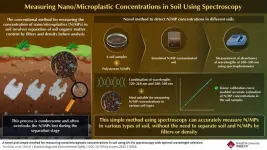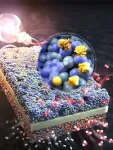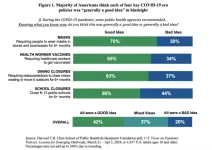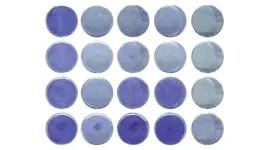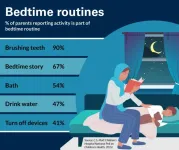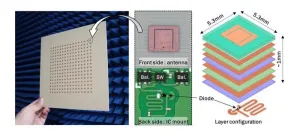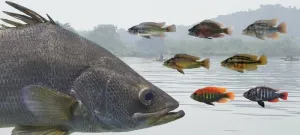Nano and microplastics are a well-known menace, found practically everywhere in nature, including soil, oceans, drinking water, air, and even the human body. Studies show that soils in particular hold a significant portion of N/MPs. The problem with these N/MPs is their microscopic size, which allows them to easily migrate through soil into the ground or freshwater bodies due to rainwater leaching. From there, they enter the human body. Hence, it is imperative to understand the distribution and movement of the soil’s N/MPs to gauge their threat and mitigate it.
Current techniques for measuring N/MP concentrations in soil require separating the soil organic matter content through chemical and physical processes. Subsequently, the isolated N/MPs are analyzed using a microscope, Fourier-transform infrared spectroscopy, Pyrolysis–gas chromatography/mass spectrometry, or Raman spectrometry. However, these techniques require advanced skills and have limited resolution for analyzing N/MPs smaller than 1 µm. Moreover, often some of the N/MPs in the soil are lost during the separation process, leading to inaccurate measurements. Therefore, it is necessary to develop a simple yet accurate method to detect and measure N/MPs ≤1 µm in soil.
To this end, a team of researchers led by Mr. Kyouhei Tsuchida from Waseda University and National Institute of Advanced Industrial Science and Technology, along with Dr. Yukari Imoto, Dr. Takeshi Saito, and Dr. Junko Hara from the National Institute of Advanced Industrial Science and Technology and Dr. Yoshishige Kawabe, also from Waseda University, devised a novel and simple method to measure N/MP concentrations in soil using spectroscopy without separating the soil organic matter. Spectroscopy can determine the concentration of N/MPs in soils based on how much light of a particular wavelength passes through the sample and how much gets absorbed. In this way, spectroscopy can potentially detect N/MPs regardless of size, provided the correct wavelengths are used to distinguish between the N/MPs and soil. Accordingly, the researchers developed a method to use the difference between the absorbance spectra of N/MPs and soil particles to quantify the N/MPs. Their findings were published in Ecotoxicology and Environmental Safety journal on 28 May 2024.
Six soil suspensions were created from soil samples with different characteristics, such as particle size distribution and organic content, and were mixed with polystyrene nanoparticles sized 203 nm. This created six different simulated N/MP-contaminated soil suspensions, with the N/MP concentration maintained at 5 mg/L. “We measured the absorbance of these soil suspensions at various wavelengths ranging from 200 to 500 nm using a spectrophotometer and based on this, determined the N/MP concentrations in the soil. Then the best combination of two wavelengths was identified for measuring N/MPs, which helped negate the interference from soil particles and leached components in the suspension,” explains Tsuchida.
The researchers found that a wavelength combination of 220–260 nm and 280–340 nm had the lowest error level for the six samples and was thus found to be suitable for measuring N/MP concentrations in different soil types. They also created a calibration curve between the concentration of N/MPs in the soil suspensions and N/MP content added to the dry soil samples. The calibration curve showed a linear relationship between the two variables and took into account the adsorption of N/MPs on soil particles. This enabled accurate estimation of the concentration of N/MPs in the soil.
These results demonstrate the efficacy of this simple spectroscopy-based method to correctly measure the concentration of N/MPs in soil, without any cumbersome separation process. “Our novel measurement approach can quantify different N/MPs, including polyethylene and polyethylene terephthalate, in a variety of soils and can easily be used as an initial assessment tool. Moreover, it can help further our understanding of the distribution and migration behavior of N/MPs in the geosphere environment,” concludes Tsuchida.
***
Reference
Authors: Kyouhei Tsuchida1,2, Yukari Imoto1, Takeshi Saito1, Junko Hara1, and Yoshishige Kawabe2
Title of original paper: A novel and simple method for measuring nano/microplastic concentrations in soil using UV-Vis spectroscopy with optimal wavelength selection
Journal: Ecotoxicology and Environmental Safety
DOI: https://doi.org/10.1016/j.ecoenv.2024.116366
Affiliations:
1National Institute of Advanced Industrial Science and Technology, Japan
2Department of Resources and Environmental Engineering, Waseda University, Japan
About Waseda University
Located in the heart of Tokyo, Waseda University is a leading private research university that has long been dedicated to academic excellence, innovative research, and civic engagement at both the local and global levels since 1882. The University has produced many changemakers in its history, including nine prime ministers and many leaders in business, science and technology, literature, sports, and film. Waseda has strong collaborations with overseas research institutions and is committed to advancing cutting-edge research and developing leaders who can contribute to the resolution of complex, global social issues. The University has set a target of achieving a zero-carbon campus by 2032, in line with the Sustainable Development Goals (SDGs) adopted by the United Nations in 2015.
To learn more about Waseda University, visit https://www.waseda.jp/top/en
About Kyouhei Tsuchida
Mr. Kyouhei Tsuchida is a researcher at the National Institute of Advanced Industrial Science and Technology (AIST) and is a doctoral student at the Department of Resources and Environmental Engineering, Waseda University. At AIST he is part of the Geo-Environmental Risk Research Group, where his specialization is studying environmental risk and transport phenomena of pollutants. He recently presented his work on the “Impact of Soil Properties on Microplastics Aggregation to Soil Particle Surfaces” at AGU23—the annual meeting of the American Geophysical Union, which was held in San Francisco in December 2023.
END
